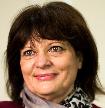Mr Elijah Moholola has responded to a stinging critique of UCT’s dithering around the banning and relocation of works of art on the campus, with a certain degree of incomprehension. UCTs critics (Elisa Galgut and William Daniels) have called the University out on its “bull***t’, using the arguments of philosopher Harry Frankfurt. Moholola has chosen to read this critique as a compilation of expletives. This is embarrassing for the University and leaves the argument made by Galgut and Daniels untouched.
What Galgut and Daniels, via Frankfurt’s concepts, wish to draw our attention to is the post-truth universe which UCT seems to have bought into in rationalizing away its shameful treatment of some of our most prominent and admired artists. In this universe, people do not always simply lie about things (as former UCT Vice-Chancellor Max Price seems to have done when he reassured me that the University would be building an Art Museum or Gallery in which all the art the University owned could be displayed. There is no sign that such a Gallery is on the cards). They play around with the truth. They obfuscate, bamboozle, mystify, muddle and befuddle. They say the opposite of what they mean. They confuse and perplex, blur and bewilder.
This is the game being played by UCT. For example, it appears to have embarked upon an endless process of review and revision about art on the campus, and it seems that no conclusion is ever reached and indeed, none will ever be reached. It is a review that is not a review, because the word “review”; implies that some decisive conclusion will be reached and recommendations made. Meanwhile, artists’ works remain covered, boarded, hidden and disguised while the interminable “consultation” continues.
The University has never fully acknowledged the crimes against art committed on its campus – for example, no artist has received an apology for his or her works having been burnt, covered, removed or boarded.
David Goldblatt’s removal of his incomparable collection, one of his final acts before his recent death, drew little or no comment from the University. And in an Orwellian manner, the University seems to hold that freedom of speech equals censorship, that academic freedom equals no-platforming and that the destruction of artworks equals liberation.
It is not just the shameful acts of ongoing censorship and no-platforming at UCT that the University is being called out on, therefore. It is its pusillanimity, spinelessness and self-delusion. The University wishes to continue to think of itself as a bastion of freedom and progressiveness while engaging in acts of restriction, suppression and censorship. This hypocrisy is not addressed by Mr Moholola’s rather incongruous response. Instead it is reinforced.

